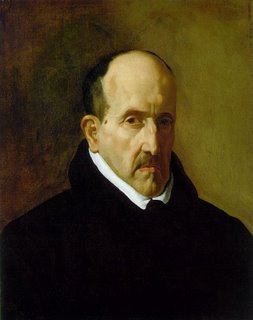
OS MONSTROS DE PAUL JOHNSON
Em tempo de eleições para as personalidades, é oportuno notar que, anunciando Monsters, a 4ª série de ensaios biográficos --- 1ª Intellectuals, 2ª Creators, 3ª Heroes --- o incontornável Paul Johnson propõe alguns saborosos critérios de monstruosidade que me cativam e me fazem pensar num exercício local:
"...Now I must write the last in the quartet, Monsters. Who to put in? It is important to include people other than rulers. Obviously certain people thrust their way into this galere. Stalin, Hitler and Mao Tse-tung were responsible for the deaths of 120 million people. Mao, whose regime killed 70 million of them, was, on the evidence of Jung Chang's superb book, a strong contender for the title of the wickedest man who ever lived, wholly without any redeeming feature. And Stalin's career of mass-murder would have been impossible without Lenin, arguably a much more evil man, since he was much more intelligent. So all must go in. But I don't want to do the dreadful Pol Pot, whose twisted mind is a mystery to me. In any case, the man really responsible for such Francophone killers was Jean-Paul Sartre, their mentor, and I have already skewered him in Intellectuals. Equally I cannot bring myself to delve into the African monsters, whether the clever, educated ones like Julius Nyerere or the savages like Idi Amin, though I actually knew those two and some of the others.
More interesting, it seems to me, are monsters who are mixtures of good and evil, the bad side gradually taking over as power corrupts. Thus I will begin with Henry VIII, the worst man in English history, who was not the eldest son and whom his father, Henry Tudor, intended to make Archbishop of Canterbury. So the prince had an education in theology, which helps to explain his nitpicking approach to the doctrinal battles of the 1530s. I am also interested in Robespierre, if only because he is the archetypal intellectual devoted to the proposition that ideas matter more than people. Once such ideologues actually get into power, the blood flows copiously. I shudder to think how many would have died, for instance, if Bertrand Russell had been made dictator of Britain. Sartre, acting to be sure through surrogates, set in motion the process which deprived one-fifth of Cambodia's population of their lives.
Monsters, however, are not just people who behave with stupendous wickedness but those who, by their peculiarities or perversity or egregious freakishness, rivet the attention in a disconcerting way. They have the basilisk stare or the Gorgon look or the Chimera whiff. Such human manticores or hircocervuses form part of the raree-show of history without necessarily being reprehensible. I am thinking, for instance, of the Duchess of Windsor, whom I knew a little in Paris in the 1950s: not beautiful at all but striking, an earwig, glittering, skeletal-thin, clicking her way across the room as though made of celluloid, like a Disney character, with her booby husband in tow. He was seemingly happy to be under the direction of this wyvern who possessed, through her Chinese blood, the vital skill known as the Baltimore Clinch. Not a bad woman, I'd say, but certainly one to make the eyes pop as one passes her historic cage, and I am glad to include her because, on the whole, female oddities do not queue up for monster-ratings. Thus Virginia Woolf, on close inspection, incites more pity than revulsion — though that does not rule out a prosopo-graphical essay on the Bloomsbury Group as a collective monster. And a dreadful creature like Eleanor Roosevelt, when investigated, turns out to be more sinned against than sinning. How can one not sympathise with a woman born so ugly that her callous mother always called her 'granny', and who was then betrothed for family reasons to a brute like FDR? Occasionally a woman makes the junior partner in a monstrous duo, as with Madame Ceausescu or Queenie Leavis, or even the senior one, Beatrice Webb being an example.
In the arts the obvious monster-in-chief is Picasso, one of the most evil creatures of the 20th century, and fitting classmate to Hitler and Mao. But I have already used him in Creators, to make the contrast with Walt Disney as the two men who most influenced the visual world in modern times. So who is the art monster? My choice, I think, falls on Le Corbusier, a nasty piece of work on a personal level but also someone who perpetrated and inspired more ugliness, on a larger scale, than anyone else in the history of architecture. But I am also going to include in this essay some reference to the monster critics and writers, such as Roger Fry, who helped to make the abomination of modern art possible and ubiquitous. And Douglas Cooper, a monster by any standards, in any context and both as a public ogre and a private cockatrice, will make a cameo gargoyle appearance.
I am delighted that the comparatively early death of Edward Said will enable me to include this malevolent liar and propagandist, who has been responsible for more harm than any other intellectual of his generation. Alas, alas, several aged monsters whom I would like to put into my list still cling to this life and are quite capable of putting Messrs Jot, Tittle and Writte on my trail. But there is some time to go yet, and three in particular may fall into my lap before the list closes. But, I hasten to add, there will be no malice in my approach. Just a burning desire to do justice. And suggestions will be welcome.”
(Paul Johnson, “Here be monsters, Of one kind or another”, The Spectator, 23.9.06)


<< Home